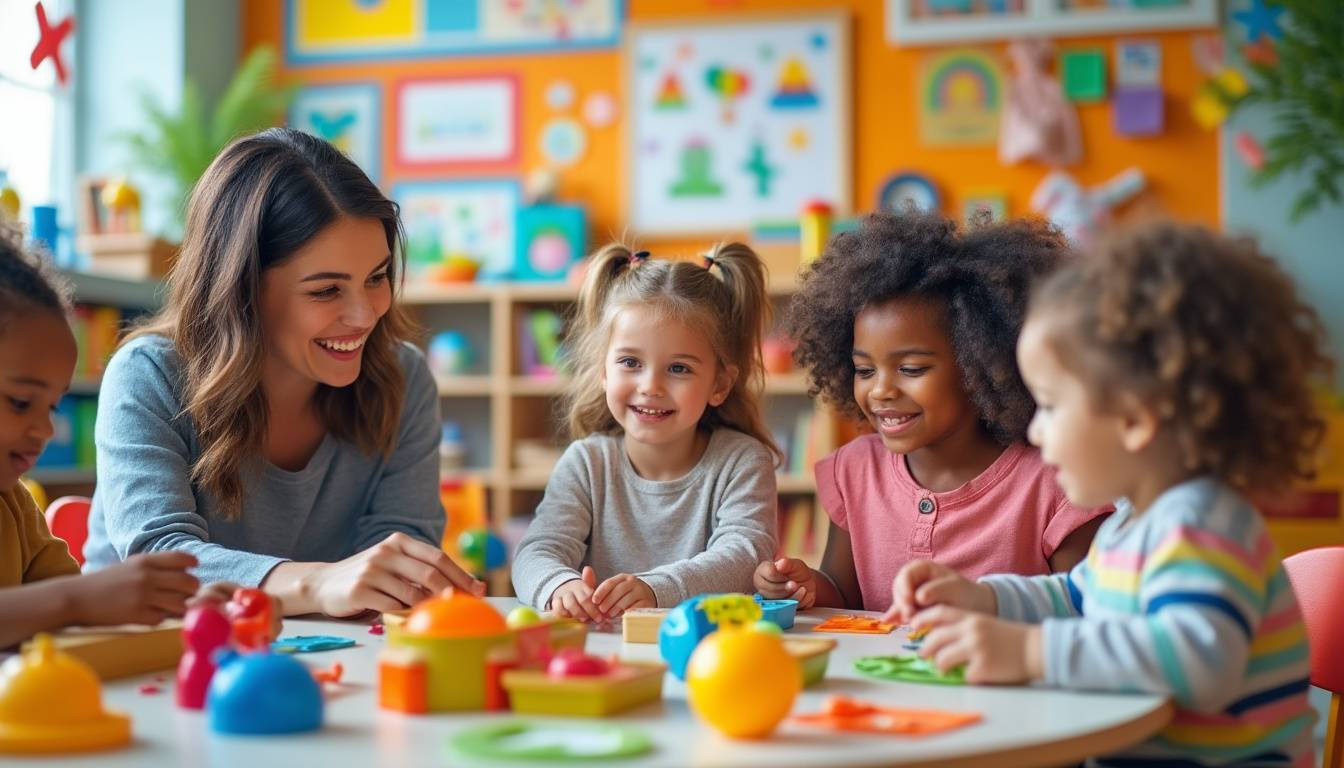Starting school marks a significant milestone for young children and their families. The transition into a classroom setting, especially for infants and toddlers, can bring a mix of excitement and anxiety. The National Association for the Education of Young Children (NAEYC) provides invaluable guidance to ease this process, emphasizing nurturing strategies that facilitate smooth starts and promote a sense of safety and connection. These methods not only help children feel welcomed but also lay a strong foundation for positive classroom experiences. Understanding and applying these thoughtful techniques ensures that early learning environments become a classroom bridge, guiding children comfortably from home to school.
NAEYC Accredited Approaches to Foster Smooth Starts in Early Learning
For young learners, particularly those experiencing their first exposure to group care, transitions can be challenging. NAEYC Accredited programs emphasize the importance of creating a stable and welcoming environment, tailoring strategies that help children feel secure and valued. Incorporating the following methods supports what educators call the Guided Entry and Safe Steps approach to reduce separation anxiety and build trust.
- Introduce the primary caregiver: Children acclimate more smoothly when familiarizing with their primary educator before parents say goodbye.
- Review the daily schedule: Talking through routines using homemade books or visual aids gives children a predictable structure called the Classroom Connections routine.
- Establish reassuring goodbye rituals: Whether it’s a wave from the window or a special hug, consistent farewell routines provide comfort during separation.
- Share family language and culture: Encouraging families to contribute words or traditions fosters inclusion and respect in the classroom.
- Provide comfort objects: Allow children to bring photos or favorite toys to ease feelings of missing home.
Schools that integrate such Welcome Ways foster a positive climate that encourages children’s social-emotional growth and readiness to learn. This orientation is especially impactful within populations facing frequent moves or transitions, such as military families or foster youth, contexts explored further on our platform.
Implementing Transition Tenders: Strategies to Nurture Kind Entries in the Classroom
When children step into a new learning environment, they need gentle guidance tailored to their emotional needs. The NAEYC’s concept of Transition Tenders focuses on educators acting as compassionate partners through this change. Building on safe steps outlined in programs across the nation, these caregivers enhance children’s capacities to adjust, reducing instances of distress or challenging behaviors often seen during transitions.
- Discuss feelings openly: Encouraging children to talk about emotions without judgment helps normalize their reactions and builds emotional literacy.
- Consistent routines at drop-off and daily activities: Predictability lessens stress and creates a secure framework where children know what to expect.
- Regular parent-teacher communication: Sharing insights about child preferences and daily experiences strengthens the classroom bridge and affirms the child’s support network.
- Timely pick-up and drop-off: Adhering to consistent daily schedules removes uncertainty and builds trust over time.
- Monitor and celebrate small successes: Acknowledging children’s adaptation moments encourages positive self-esteem and motivation.
Transition Tenders who employ these practices transform early learning spaces into arenas of encouragement and safety, essential for children’s holistic development. Such strategies have shown relevance for many families in geographic mobility situations or groups navigating complex life events, highlighting the importance of cultural competence and resilience in educational settings.
Classroom Connections and Building Community Through Structured Transition Techniques
Beyond individual interactions, crafting a classroom culture around smooth transitions cultivates collaboration among children, educators, and families. This Classroom Bridge fosters collective stability and nurtures a sense of belonging, key for positive learning trajectories.
- Collaborative routines: Involving children in cleanup and preparation for next activities develops autonomy and eases moving between tasks.
- Using visual schedules and cues: Support cognitive anticipation, reducing confusion about what comes next, a core element in the Kind Entry philosophy.
- Creating personalized transition tools: Homemade books or picture schedules connect home and school experiences, bridging familiar and new environments.
- Encouraging peer support: Older or more acclimated children can assist newcomers, facilitating social integration and kindness.
- Engaging families through informative communication: Sharing tips and strategies fosters a shared commitment to children’s well-being.
Such Classroom Connections contribute to a community where children feel anchored and understood. Effective transitions reflect a program’s commitment to gentle guidance and respect for childhood’s emotional rhythms.
Effective Practical Tips from NAEYC for Caregivers Supporting Transitions
NAEYC offers an extensive list of 11 practical tips designed to make the transition into a school environment less daunting for young learners. Key highlights include:
- Understanding the program’s approach: Asking about the primary caregiver’s name and how families can contribute information facilitates smooth communication.
- Review routines visually: Helping children familiarize themselves with the day’s schedule in advance supports emotional readiness.
- Building separation rituals: Establishing consistent goodbye routines creates a sense of predictability and safety.
- Emotional validation: Recognizing that children’s upset or anger is a normal response prevents misunderstandings.
- Reunion rituals: Checking in with teachers after the day reinforces connections and provides reassurance.
Applying these techniques enhances the Smooth Start and Safe Steps that many NAEYC Accredited programs prioritize, ensuring children begin their educational journeys confidently and warmly. These approaches align well with broader educational themes, including addressing the needs of migrant students or those navigating career transitions within family dynamics.
Explore related resources on developing early reading and comprehension skills to support holistic child development during transitions.


